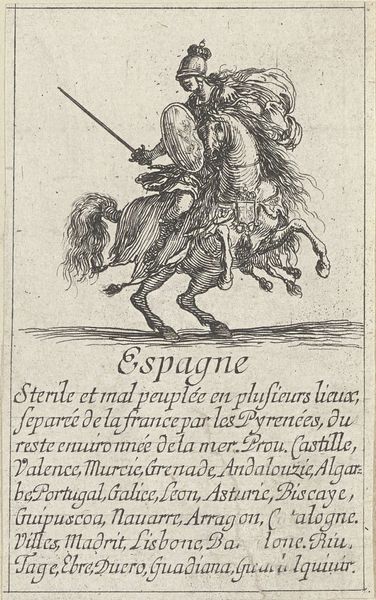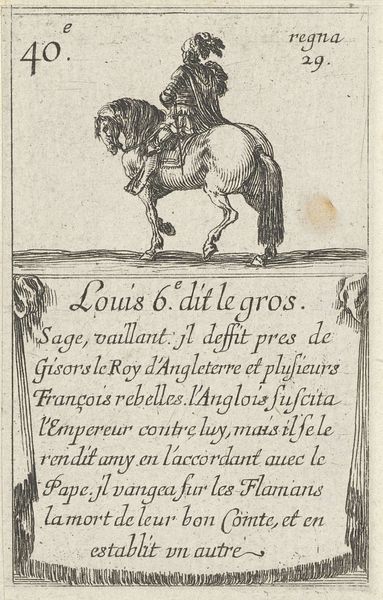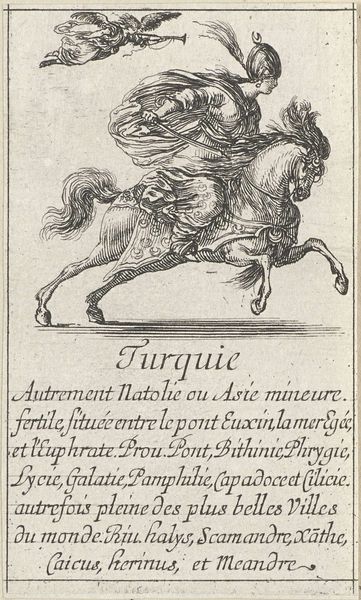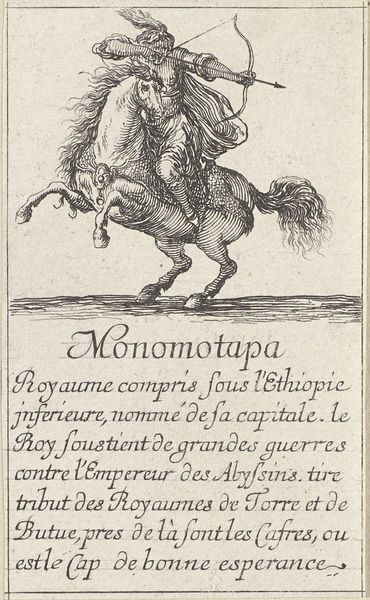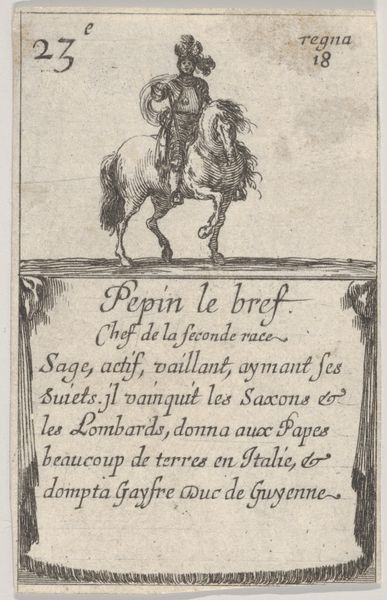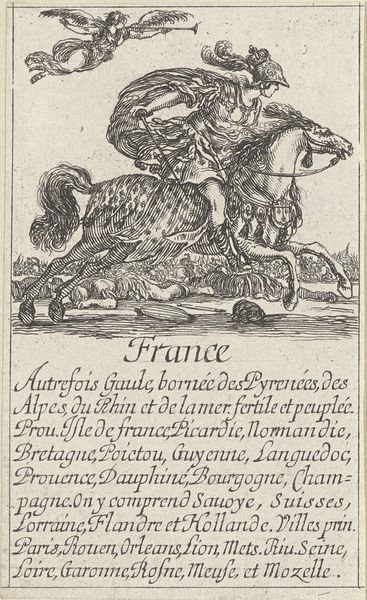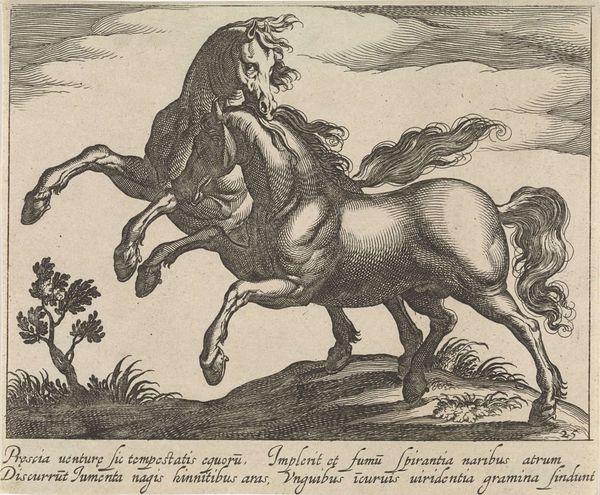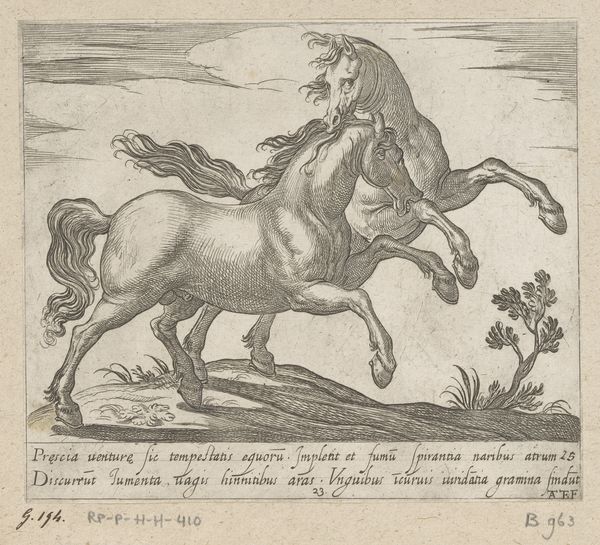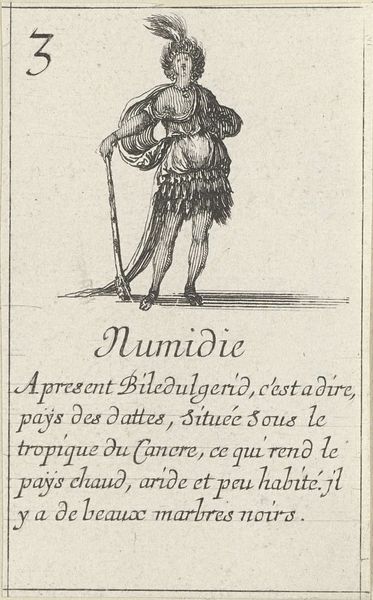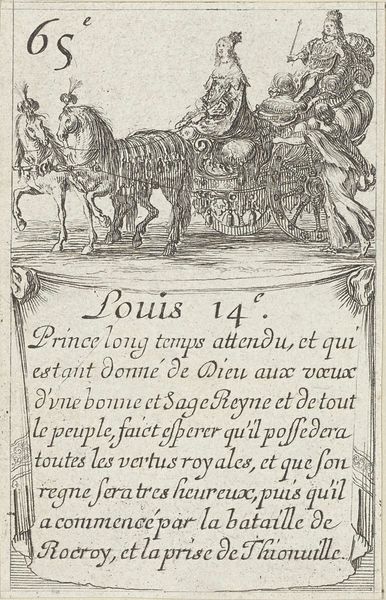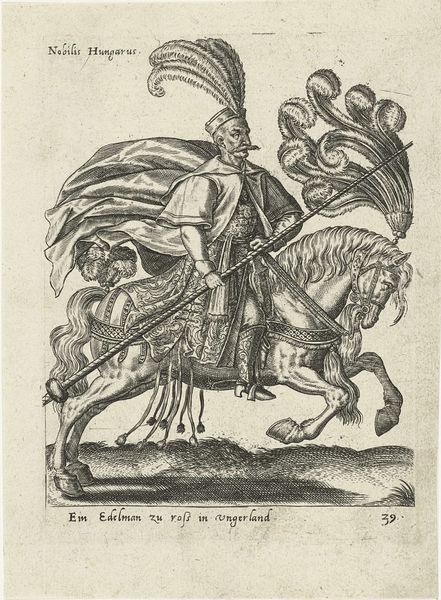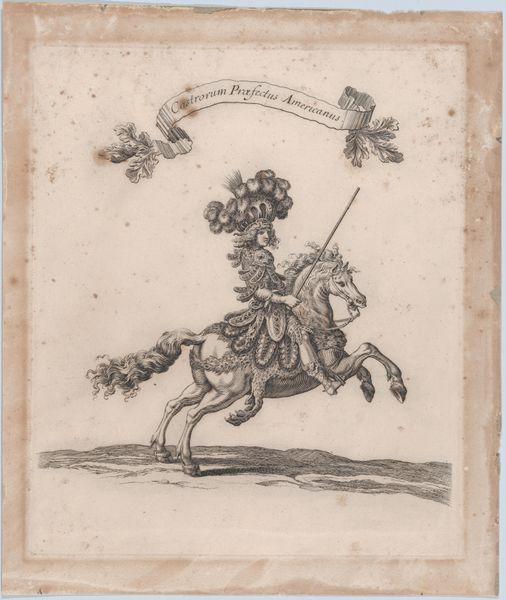
Mexico, from the playing cards "Jeu de la Géographie" 1644
0:00
0:00
drawing, print, engraving
#
drawing
#
baroque
# print
#
landscape
#
history-painting
#
engraving
Dimensions: Sheet: 3 1/2 × 2 3/16 in. (8.9 × 5.5 cm)
Copyright: Public Domain
Curator: Look at this playing card, part of a set titled "Jeu de la Géographie," or "Game of Geography", printed in 1644 by Stefano della Bella. This one represents Mexico. Editor: Immediately, what strikes me is the raw energy—that horse is rearing up, the rider looks defiant, ready to strike! But there's also an odd disconnect—it’s all rendered in this rather delicate, almost ornamental, engraving style. Curator: Indeed, the image blends fact with imagination. See the French inscription beneath the illustration, describing Mexico as “New Spain, the most beautiful province of America”? The card highlights Mexico's vast expanse, stretching from the Gulf of California to Yucatán. Editor: But it also betrays a very specific, European view of the Americas, doesn't it? A vision imposed onto a land and its people, framed for the consumption of a European audience playing a parlour game. Curator: Absolutely. Consider the attire of the rider. Is this a European’s romanticized vision of an Indigenous warrior? Or something else entirely? Bella's relying on preconceived notions, visual tropes. Editor: It really does point to the way power structures and imperial ambitions get embedded in even the most seemingly innocuous objects, like playing cards. What’s shown, but even more so, what isn’t? Curator: Exactly. By reducing a complex land to a single image, complete with a simplified geographical blurb, it speaks volumes about the European mindset of the time, their desire to categorize and contain the 'New World'. Editor: These aren't simply geographic representations; they're loaded cultural documents. This card asks us to look at how societies perceive each other, how history is constructed and circulated. It makes you wonder about the visual culture they developed independently. Curator: Precisely. It is fascinating how seemingly trivial items reflect deeper cultural biases. Editor: A playing card—such a simple thing, yet a lens into complex power dynamics of the 17th century.
Comments
No comments
Be the first to comment and join the conversation on the ultimate creative platform.
